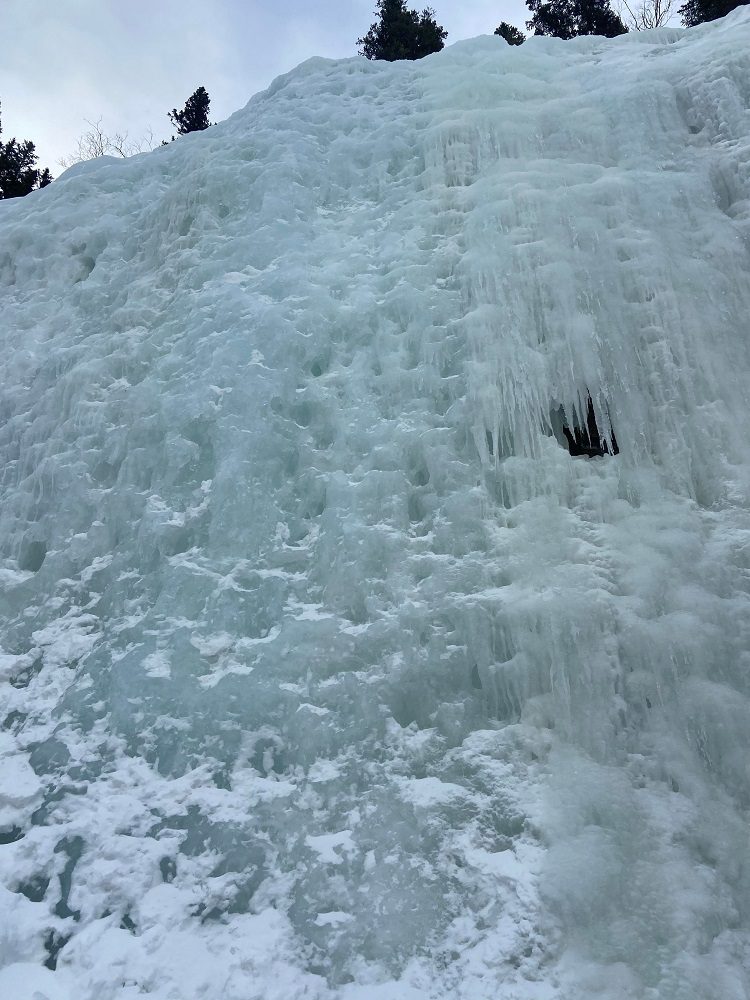Want to Try Ice Climbing? Spring in the Mountains is the Perfect Time
By March, climbs are big, the ice is solid, the days are long and the temps are warm enough that you probably won't freeze your fingers

Waterfall ice climbing is one of the best ways to explore the mountains in spring, thanks to long days, good conditions and well-formed routes.
Ice climbing can be broken into two categories: alpine ice and waterfall ice, with the former consisting of glacier and couloir ice, and the latter including all seasonal ice that forms from water runoff or waterfalls. Alpine ice is available to climb year-round and is usually best climbed in the summer, when it’s free of snow and the empty voids called crevasses can be safely avoided.
Waterfall ice is what climbers pursue from fall to spring. The Canadian Rockies has some of the best and most reliable icefall routes in the world, and that’s why hordes of people travel here every year in search of the classics. There are thousands of climbs, from 20-metre introduction ones to kilometre-high test-pieces. While some of the most sought-after routes are on the Icefields Parkway, there are some memorable ones right here in the Bow Valley, in Kananaskis Country and in the Ghost Wilderness Area.
The season usually starts late October when we get our first cold snap, and the freezing levels drop to around 2,000 metres. Early season can be fun because there’s little to no avalanche hazard and the climbs haven’t been ascended by hundreds of climbers. Ice climbs build over time, so in the fall, they’re often very thin and difficult to protect safely. As the winter progresses, the climbs get bigger, fatter and more substantial.

By mid-winter, nearly all the local ice routes are formed, but the short days, cold weather and high avalanche danger makes ice climbing during this time an activity best saved for the keen. I’ve spent too many days curled into a ball at the base of a sheet of ice struggling to survive as my partner climbs their way up cold ice. And that’s why some climbers save their ice climbing days until spring. By the way, cold ice shatters like glass and isn’t fun to climb, whereas warm ice is easy to swing into and often very enjoyable to climb.
In mid-March, there’s enough daylight that you can safely climb big objectives without having to break out the headlamp. Thanks to warm temperatures and sunny days, you don’t need to bring 10 layers of clothes and you probably won’t suffer from frozen fingertips.
The approaches have become beaten-out donkey trails and the climbs have had so much attention that you won’t have to worry about getting pumped while digging for good ice. Many of the popular routes will have big pockets where other climbers have placed ice tools, which will make it easier to find a good spot to swing.
While most of the south-facing climbs will soon be out of condition, this is the best time to get on those shady ones. Just remember to always check the avalanche conditions here before heading out.
How to start ice climbing in the spring: If you’re completely new to the sport, then you’ll want to reach out to a guiding company who can supply equipment, know-how and take you out for your first time. We’re lucky in Canada to have so many world-class routes that will remain climbable into early April.



